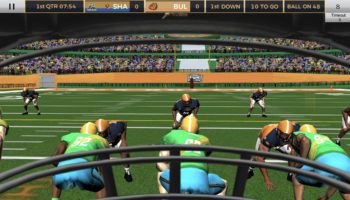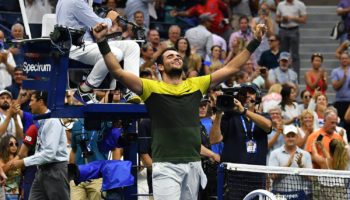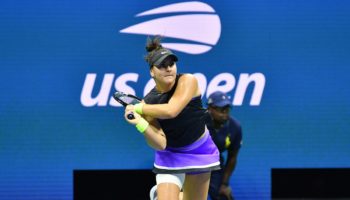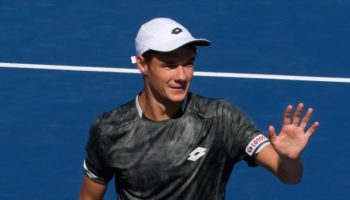Follow @Koiki_Sport Follow @ALOST_Official
 – by Adesina O. Koiki
– by Adesina O. Koiki
A Lot of Sports Talk editor-in-chief
NEW YORK — Sitting inside of a small cubicle adjacent to the media information desk at the US Open, the German doubles team of Kevin Krawietz and Andreas Mies had just wrapped up its first-ever victory at America’s Grand Slam and were asked if they have nicknames for each other, either on or off the court.
Nothing came to mind off the bat outside of their common nickname amongst German fans, Kramies (a portmanteau of their last names), but, after a few seconds of ruminating, a few interesting “nom de doubles tennis” ideas soon sprouted up from both Krawietz and Mies.
“We are like fire and ice,” Mies exclaimed in talking about their personalities. Seconds later, Krawietz talked about the team’s strengths and both compared themselves to one of Germany’s most popular exports.
“[We’re] German machines, like the German cars,” Mies said facetiously before admitting that he actually drives an Audi while Krawietz drives a BMW when they are back home in Germany.
Whether it’s “Kramies,” “Fire and Ice” or “Audi and BMW,” it is this instant chemistry that has allowed Krawietz and Mies to make one of the more unexpected meteoric ascents that doubles tennis has seen in recent memory.
Krawietz and Mies are only completing their first full season on the ATP Tour as a tandem in 2019, yet they have a Grand Slam title to show for their efforts, winning at Roland Garros in June. It is only fitting that their remarkable 2019, one that could be punctuated with a US Open title after they reached the semifinals on Tuesday, also started with a championship while in the Empire State.
In February, Krawietz and Mies did not drop a set in winning the New York Open on Long Island, just their fourth-ever tour level event as a pairing. Not bad for a team that officially joined forces while toiling away in the Challenger level in August 2017 and, after a knee injury to Mies ended his year soon after, did not compete again until April 2018.
“The vibes are very good, of course, to come back to New York,” said Krawietz. “Our first title in New York was very special for us. We played pretty good tennis. [It was] a pretty good tournament in the beginning of the year. It was very cold, but we are used to it in Germany. Now we’re coming back to New York and it’s very special, of course.”
More than the good vibes that emanated from winning the New York Open, the title in February also showed both that they had officially arrived on the big stage.
“It was such a big moment and a big relief. That really showed us that we belong to the ATP Tour,” Mies said. “We are just coming from the Challenger Tour and making the next step and getting into more ATP events at the start of the year. We won one title right away so that gave us a lot of confidence moving forward. And that, of course, helped us also for the French Open.”
Though unseeded in Paris, Krawietz and Mies were undaunted, carving their way through the field before taking the French Open title, beating the all-French pairing of Fabrice Martin and Jérémy Chardy in the final. In winning the championship, Krawietz and Mies became just the third team in men’s tennis history to win a Challenger event and a Grand Slam in the same year.
Pulling off the double play of Challenger and Grand Slam titles in a calendar year highlights the difficulty that almost all players have in making a name for themselves in doubles on the professional level. Most teams have to hone their craft for years in the Challengers, hoping to develop the chemistry needed to earn enough points to take the next step to the big leagues. Others in the Challenger level end up partnering with established ATP Tour veterans who are ranked high enough on their own to earn places in top-level events.
To say that Krawietz and Mies earned their spot at the top of the tennis game is an understatement.
“It’s not normal that you play with a guy and you start winning right away,” Mies said. “You have to find the right chemistry to feel comfortable on the court, but we felt comfortable playing together from the first tournament together at the Challenger level. We had good results right away and that, of course, helps your confidence, and we built on that.
“We’re different players, we’re different characters but it just clicks. And it clicked,” Mies continued.
Though their chemistry blossomed on the Challenger level and carried itself onto the ATP Tour, Krawietz and Mies still found the adjustment to the big show very tough despite the near-instant success, especially when going up against teams in which both players are doubles specialists.
“We didn’t play so many doubles teams and we [felt] comfortable against the singles guys,” Mies said. “The singles guys that play doubles, we have a good plan for that because they don’t cross so much, they play simple with their tactics and you can return more relaxed because they’re not going to cross so much. You can go hard at them at the net. They usually don’t volley as well as the doubles guys.
“Against the doubles teams, we had to find solutions. Before, it was not easy when they play a lot of I-formations and you don’t know where they serve, where they go at the net. We had to figure that out more.”
Soon enough, Krawietz and Mies did make those adjustments, and it has been their opponents who have had to deal with figuring out how best to play against the team what went from being ranked below 130 in the rankings to being championship threats every time they enter a tournament field.
“Andy is unbelievable at the net. He has the best reactions,” Krawietz said. “I feel good on my serve. I feel very comfortable on my serve, so I have to hit the right spots and then he can cover the good spots. We have no big weakness so we can improve, of course, here and there. But it’s a good thing that we both serve good, return well, solid overall.”
Their contrast in games is only superseded by their difference in personalities, though the differences are what allow Krawietz and Mies to be on the same page on the court.
“Kevin is more a relaxed guy, a little bit more calm. I’m more of an emotional guy, an emotional player,” Mies said. “It’s a little bit like fire and ice. When I’m a bit too emotional, he calms me down. When it’s close, he’s always very relaxed, and it helps me to relax. When he’s a bit too relaxed and he’s a bit low with the energy, I can push him up.
“In doubles, you have to bring good energy and we push each other to the limit,” Mies continued.
Krawietz and Mies have pushed each other beyond the limits of what is possible for doubles teams with their immediate success. Now if they can only push each other to come up with the perfect nickname.
Follow @Koiki_Sport Follow @ALOST_Official




